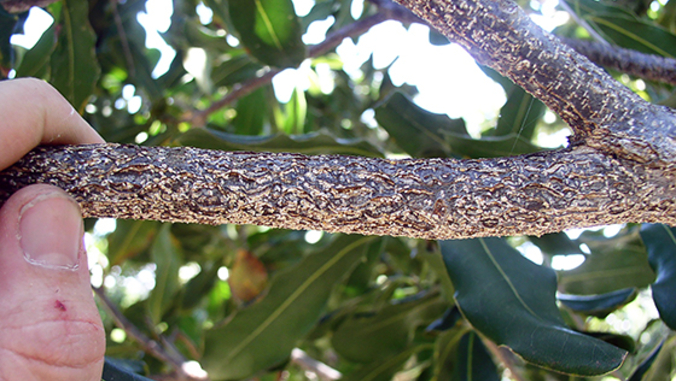
New research could help control a bug harming Hawaiʻi’s macadamia nut crops. Some years ago, an Australian native insect called the “macadamia felted coccid” found its way to Hawaiʻi, causing leaf and branch dieback, flower drop and sometimes tree death among macadamia trees. Recently, the invasive pest became widespread on Hawaiʻi Island, leading to reduced crop yields.
Horticultural oils and insect growth regulator insecticides are frequently used to control this pest, without any knowledge of economic injury level. To understand the relationship between macadamia felted coccid infestation level and yield loss, the University of Hawaiʻi at Mānoa’s College of Tropical Agriculture and Human Resources (CTAHR) conducted a study to measure yields in various locations and varieties of macadamia nuts related to the number of insects infesting the trees over the course of a year.
Led by Professors Mark Wright and Rosemary Gutierrez, the Department of Plant and Environmental Protection Sciences’ study, “Macadamia felted coccid impact on macadamia nut yield in the absence of a specialized natural enemy, and economic injury levels,” provides estimates of the economic injury level for macadamia felted coccid that results in economic loss justifying pest management intervention. It appears in the most recent edition of the international journal Crop Protection.
“This work provides growers with a tool to decide when to apply pesticides, and will optimize the economics of pest management for them,” said Wright. “The Hawaiʻi Department of Agriculture has a promising species in quarantine, and we are collaborating with them to seek permission to release this potentially beneficial biocontrol agent.”

